Acer Switch 3 Review
Acer Switch 3
A good-value convertible with a few performance niggles
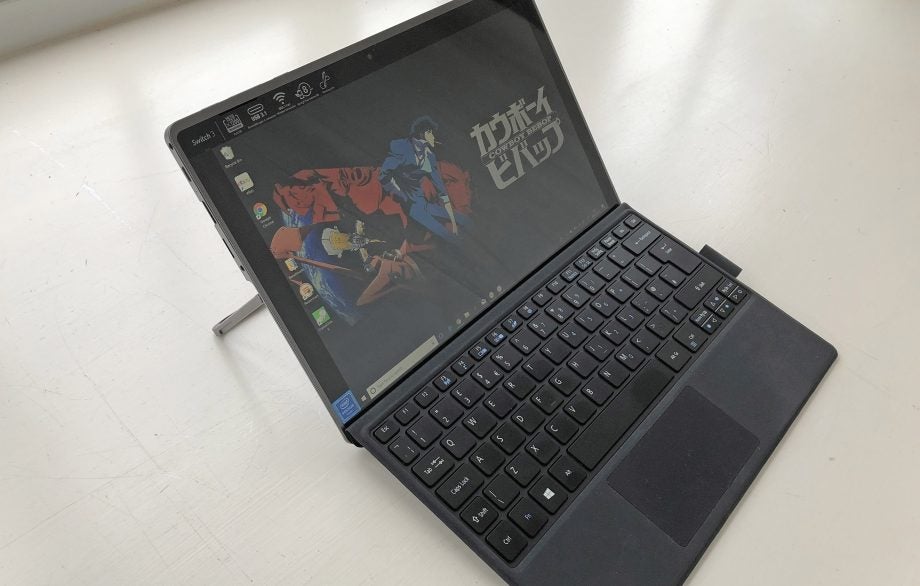
Verdict
Pros
- Affordable asking price
- Crisp, bright screen
- Decent keyboard
Cons
- Limited performance
- Could use more connections
- Tricky to use on your lap
Key Specifications
- Review Price: £499
- 1.1GHz Intel Pentium N4200
- 4GB LPDDR3 RAM
- 128GB SSD
- 12.2-inch 1920x1200 IPS display
- 1xUSB 3.0, 1xUSB 3.1 Gen 1 Type-C, microSD
What is the Acer Switch 3?
If you’re after a highly portable laptop replacement and your budget doesn’t stretch to the Microsoft Surface Pro, Acer’s Switch 3 is worth considering.
Available for just £499 online, the Switch 3 offers a similar convertible design to the Surface Pro, at almost half the price. You get the same Windows setup, complete with a keyboard cover and support for Acer’s stylus pen.
Of course, Acer can’t quite match Microsoft’s device when it comes to specs. All the same, the Switch 3 offers impressive flexibility, switching from tablet to laptop mode in no time at all. And if your needs aren’t too demanding, this could be a solid solution.
Related: Best laptops
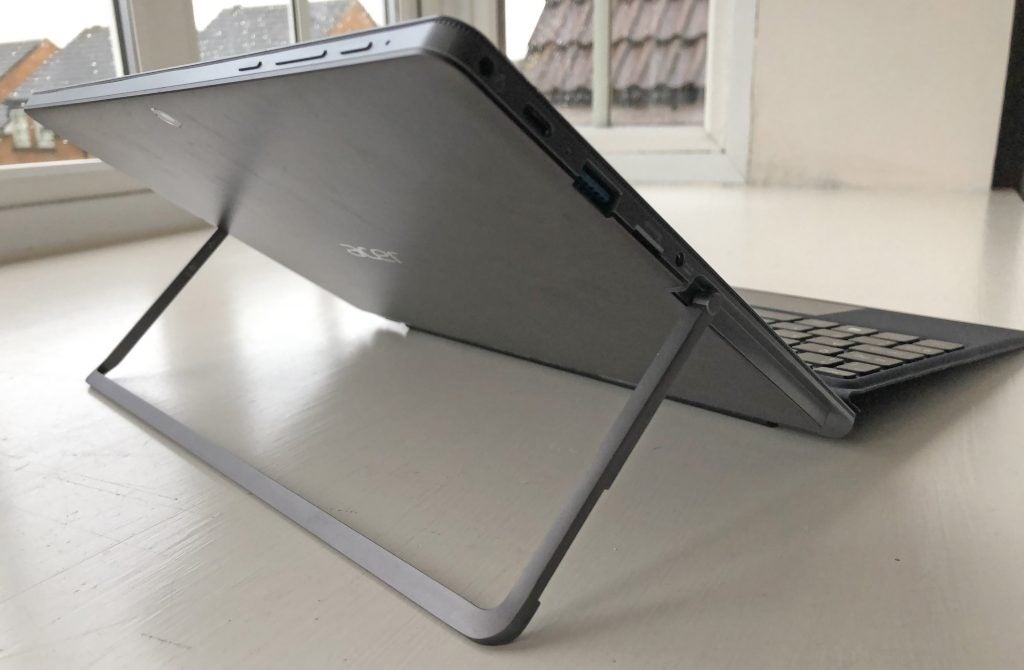
Acer Switch 3 – Design and Build
In tablet form, the Switch 3 is a bit of a beast. The device by itself weighs 0.9kg, jumping to 1.25kg once you slap on that keyboard dock. In other words, your biceps will start to ache before too long if you’re actually clutching the thing. That’s significantly heavier than the likes of the iPad Pro, although some rivals such as Microsoft’s Surface Pro aren’t much lighter.
Operating the Switch 3 works best when you have a flat surface to rest it upon. Pull out that rear kickstand and you can tilt the screen to almost any degree, for a comfortable view. In this form it’s ideal for browsing the web, Skyping the fam or kicking back with a movie. And with the keyboard cover attached, the Switch 3 instantly becomes a makeshift laptop.
Of course, the Switch 3 really does require a surface to be used like this. Typing with the device on your lap is a shaky experience at best.
That kickstand hinge is well constructed and remains stiff, holding firm even if you violently poke the Switch’s screen. Likewise, the plastic shell of the device is reassuringly solid. I was confident when throwing this tablet in a backpack, along with plenty of pointy objects. Even with frequent punishment, the thing didn’t suffer any damage.
Connectivity is surprisingly limited, however, given the size of this device. For a start, you get only two USB ports, one of which is 3.1 Type-C and the other an old-school USB 3.0. If you’re the kind of user who charges your mobile devices while also plugging in various peripherals, you’ll run out of space pretty fast. Likewise, there’s no HDMI port or mini DisplayPort connection for sharing your display output with a monitor or projector.
A 128GB flash drive can be used to store your software and other bits, although a sizeable chunk of it comes pre-filled by the OS and various apps. If you happen to run out of storage, don’t fret. You can easily add some more by slipping a microSD memory card into the Switch 3’s slot.
As for security, you won’t find a fingerprint sensor hidden away on the Switch 3’s chassis. You’ll simply have to enter a PIN or password each time you wish to unlock the tablet.
Related: Best laptops for students
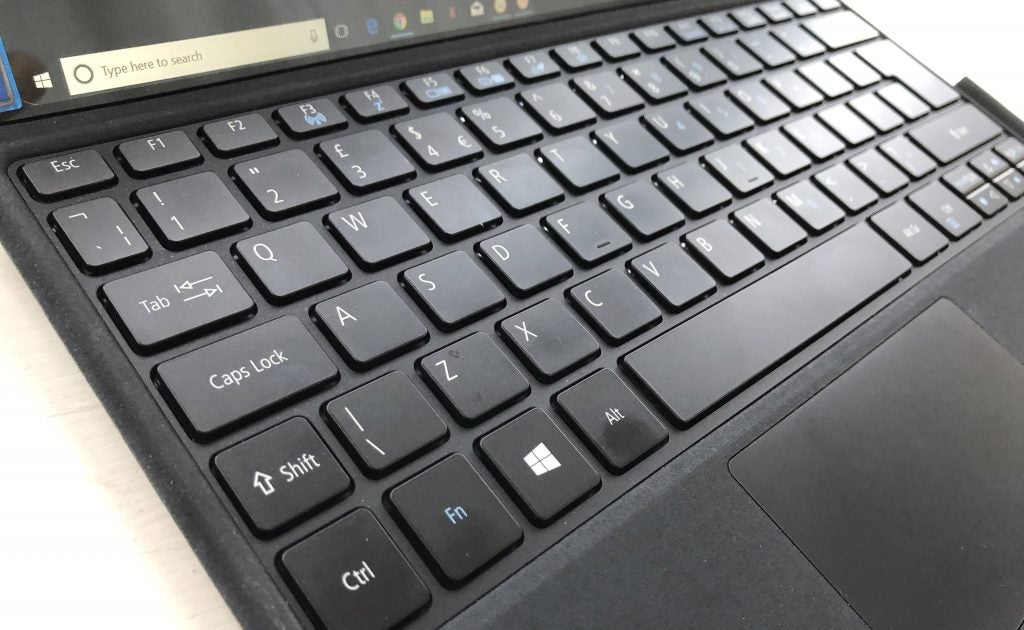
Acer Switch 3 – Keyboard and touchpad
The Switch 3’s cover conceals a nifty keyboard, in a similar fashion to those Microsoft Surface devices and countless mimics. This can either be laid out flat or propped up at an angle using built-in magnets, for a more comfortable typing experience.
I’ve tested quite a few of these keyboard covers and the Switch 3’s effort is certainly commendable. For one, you get proper keys which are depressed into the board when struck. None of this flat, one-piece nonsense. That kind of physical feedback really helps with touch typing, so I found myself adjusting to the layout in no time at all.
The travel distance is good for a convertible and the keyboard is also impressively solid, suffering little flex when pounded. Plus, those keys are well-spaced, stretching right across the board to make full use of the available room. Even the cursor keys aren’t hideously crushed up in the corner, a common complaint with these kinds of keyboards. I typed up this entire review on the Switch 3, in complete comfort.
Sadly there’s no kind of backlighting however, so you’ll need a light for nighttime typing.
You also get a compact touchpad squeezed into the Switch 3’s palmrest. All the same, I preferred to simply tap the touchscreen to move the cursor about, scroll through webpages and so on. Using the pad isn’t any quicker, although it does at least support mouse clicks and multi-touch gestures.
The Switch 3 also supports Acer’s Active Stylus, for easier editing of documents or sketching of creative masterpieces. This slips into a handy loop at the right edge of the keyboard when not in use, so it doesn’t go walkies on your travels.
I’m not exactly brimming with artistic talent, so I used the stylus to play around with some office docs and make some adjustments instead. It feels just like a proper pen when you’re wielding it, thanks to its full-sized design and heft. You get two mouse buttons housed on the side, plus a clip to help hold it in place when you slip it into that side loop.
I found the stylus to be a perfectly precise tool for this kind of work, while there is a degree of pressure sensitivity for sketching also.

Acer Switch 3 – Screen
If you bag yourself a Switch 3, you’ll find you spend a lot of time staring at the 12.2-inch IPS display. Thankfully it’s a pretty decent panel, for the price.
This screen boasts a 1920×1200 Full HD resolution, which means you can expect crisp image reproduction no matter what you’re up to. Definitely good news when editing photos or relaxing with some Netflix on the move.
On top brightness levels, I had no trouble seeing what I was doing. Even watching darker movie scenes while seated outside wasn’t a headache. Especially important if you want to watch any Marvel shows like Punisher on the go.
Viewing angles are also respectably wide, if you’re hoping to share that screen with someone else. Besides a small drop-off in brightness, there’s little impact when you tilt the display away from your face.
Colour reproduction leans more towards realistic hues, so don’t expect any punchy, vibrant visuals. However, the Switch 3’s sRGB colour gamut coverage of 87.7% means it can’t accurately reproduce as many colours as some of its rivals. This drops to just 64.3% for Adobe RGB.
All the same, only the most picky of graphic designers are likely to be perturbed. I edited plenty of photos on the device in my time with it, while most consumers should be happy enough when browsing their albums, watching movies and performing everyday tasks.
Acer Switch 3 – Audio
Above the Switch’s screen you’ll find two very slender speaker grilles, positioned towards the left and right edges. These speakers are very poor, unfortunately. Even on top volume they lack any kind of power, while I also heard a lot of buzzing and distortion from my music and videos. You’ll definitely want to plug in some headphones if you want to bop along to your tunes while working.
Related: Best gaming laptops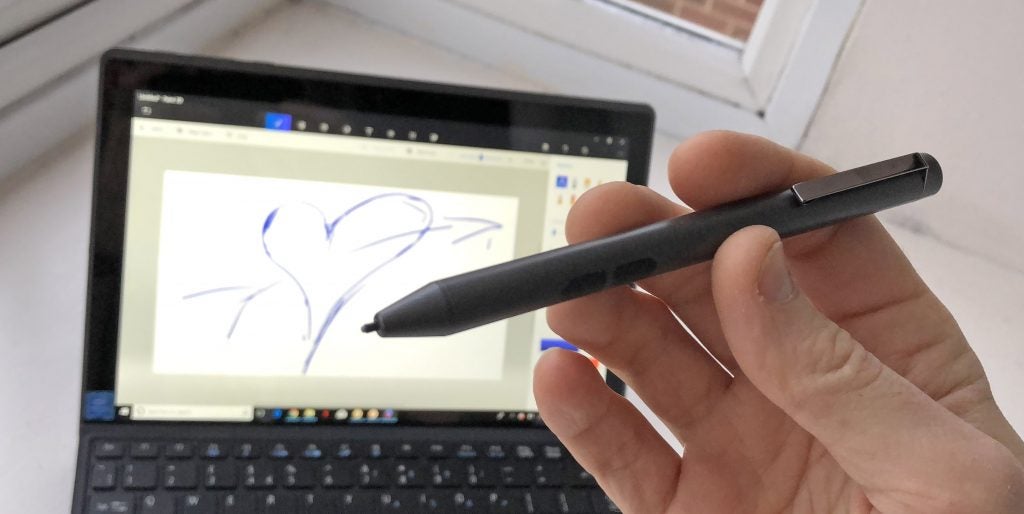
Acer Switch 3 – Performance
One of Intel’s Pentium N4200 chipsets runs the show here, propped up by a very basic 4GB of RAM. In other words, any demanding users should most certainly look elsewhere.
During everyday use, I occasionally found myself drumming my fingers on my desk as I waited for an application to eventually load. Don’t expect to do much gaming on the Switch 3 either. The integrated Intel HD 505 Graphics cope just fine with older titles or simple games such as retro-style point n’ click adventures. However, anything more advanced will result in a choppy frame rate.
For any benchmark enthusiasts out there, the PCMark 8 score of 1642 places this device behind more expensive models such as the Microsoft Surface Pro and the Eve V. Nothing too surprising, then.
- PCMark 8 – 1642
- Geekbench single-core – 1490
- Geekbench multi-core – 4593
Storage access is rather slow too, in comparison with those more premium rivals. I recorded read speeds of just 144.2MB/s and write speeds of 134.7MB/s.
Acer Switch 3 – Battery life
With a mixture of everyday tasks, I generally enjoyed six hours of use from the Switch 3 before the battery was fully drained. That’s certainly less than you’d get from more premium devices such as the iPad Pro and Surface Pro, and not quite enough to stretch a full working day.
Our standard battery benchmarking test gave a final result of six and a half hours exactly. This involved charging the Switch 3 to full capacity and then running a loop of video playback and web browsing.
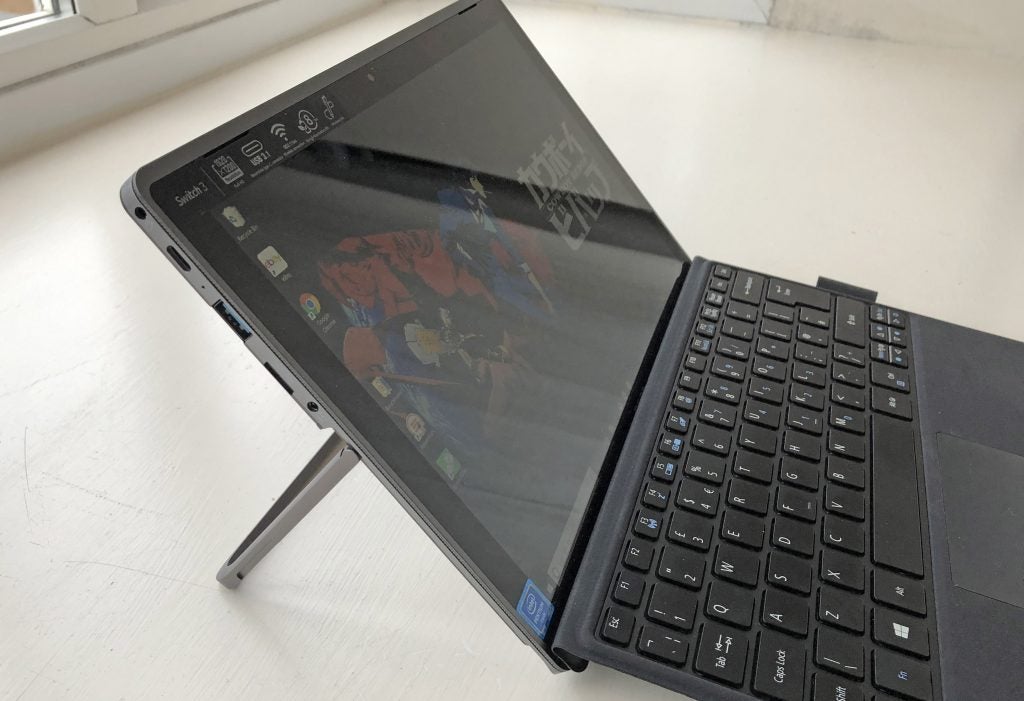
Why buy the Acer Switch 3?
The most enticing thing about the Switch 3 is that sub-£500 asking price. Considering most of its rivals push closer to (or bound right into) the £1000 price bracket, Acer’s convertible is considerably easier on the old savings account.
If you’re after a portable device for word processing, web browsing and other simple everyday tasks, the Switch is a decent machine. Battery life could certainly be better and we’d prefer more ports, but strong usability and that crisp, well-lit display made us appreciate the device on our travels.
That said, any graphic designers or more demanding users should consider spending a bit more on a rival machine. The likes of the Surface Pro offers a bump in performance and longevity, as well as a more accurate display.
Verdict
Anyone who needs a Surface-style convertible for basic everyday use that won’t break the bank should consider Acer’s Switch 3.


